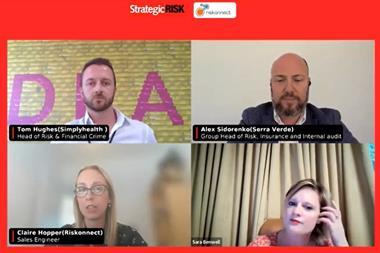In the late 1960s, marketing guru Ted Levitt suggested that the purpose of a business was to "create and keep a customer". He suggested that the modern firm should view "the entire business process as consisting of a tightly integrated effort to discover, create, arouse, and satisfy customer needs". Two generations later, businesses are waking up to this reality.
Customer relationship management (CRM) is storming organisations across the globe, parading itself in the guise of new technology and software. Recent market analyses by the Gartner Group suggest that the CRM software market is set to grow by 700% over the next three years and to generate total revenues of approximately $3 billion. However, behind this camouflage of fancy software packages sits the simple concept that knowing, understanding and serving the customer should be at the core of what organisations do best.
So what is CRM? And what will it deliver to your company? Building sustainable and successful relationships with a large customer base is not the easiest thing to do, but there are some key steps to creating and maintaining happy customer relationships that are profitable and enduring.
Step i: Understand the concept of CRM
Perhaps most critical to implementing a CRM strategy is fully understanding what it is all about. Over the past 12 months, I have heard multiple definitions of CRM, including suggestions that it is a sales strategy, a software product and even a new method of data collection! None of these definitions actually involved using the words customer or relationship.
CRM involves customers, organisations and relationships, and combining the three necessitates the need for management. It is the renaissance of a belief that at the heart of all transactions is the creation of mutual value for all parties.
Successful CRM focuses on understanding the needs and desires of the consumer. It is about creating a competitive advantage bybeing the best at understanding, communicating, delivering and developing existing customer relationships in addition to creating and keeping new customers. The concept of product life cycle is giving way to the customer life cycle. Mission statements will focus greater attention on how to deliver customer satisfaction; organisations will continue to structure themselves around customer segments and not product lines; customer services staff will have access to the information customers assume they already have.
Understanding CRM begins with three simple rules of thumb.
Step 2: Get to know your customers
At its most basic, marketing is about finding out what customers want and providing it. Yet this task seems to be fraught with difficulties. Ask any experienced marketing manager, and they will confirm that not only providing the product or service, but understanding and managing consumer expectations are key to creating satisfied customers. Despite their efforts, many will find that their customers still act indecisively, unpredictably, and unproductively, and often find themselves dissatisfied and disappointed with the result of their transaction. What is the solution?
Far-sighted businesses caught on to the idea that collecting data on their customers would provide them with a framework to build up an understanding of their market. Improvements and innovations in technology, a key enabler of customer data collection, have provided organisations with the ability to store, share, analyse and transfer vast amounts of data at low cost. Growth in the use of sophisticated databases, data warehouses and data mining software applications have, to a certain extent, made it possible for companies to analyse customers' behavioural patterns, individual levels of profitability and the lifetime value of their custom.
The ability to record and observe customer behaviour patterns at the individual and group level provides organisations with unique competitive advantages. Advanced data analysis techniques can produce statistically-grounded behavioural models that can accurately project customer behaviour in a variety of situations: the likelihood of purchase of a specific product or service, the best next offer, or the probability of defection. These models are specific to that organisation's existing customer base and are not based on assumptions focusing on lifestyle characteristics or demographic principles that account for the segmentation principles applied to the majority of direct marketing activities.
"Great!" I hear you say. "Let's get to it!" However there is a sting in the tail: the problems lie in integration. How many of you work in organisations that have an integrated marketing and information systems department? Not many, I assume. Data, when analysed and used effectively can provide the organisation with refined and sophisticated methods of customer acquisition, reduced direct marketing costs with higher return on investment, and increased insight into developing marketing communications that are targeted and relevant. The information systems are the means of collection and analysis: marketing is the process of application. Yet the co-operation of the two organisational functions in this process are often disparate and highly fragmented. Dale Renner, global managing partner of the CRM practice at Accenture (formerly Andersen Consulting) comments: "The barriers to building customer equity for many companies lie within their own four walls." He adds: "Priceless customer information lies dormant and largely unused in functional silos." What is the best way to combat this?
Step 3: Point your organisation in the right direction
The old adage about the customer always being right, attributed to the department store magnate George Selfridge, is often treated with contempt in modem businesses. We all know of companies where the customer appears to be very much in the way of getting on with the real work. Examples may include an insurance company whose claims department is less than willing to converse with policyholders that have pending claims or a hotel whose receptionist is too busy filing to attend to guests.
It is critical that the company's senior managers and CEO are fully behind the CRM strategy and pay it more than lip service. "The problem in many companies lies with the board," says Russell Biggart, managing director of Customer Relationship Management (UK) Ltd. "Their focus is on shareholders, not their customers. They don't seem to realise that the most effective way of producing shareholder value is to value the customer."
If the people in an organisation are focusing on something other than serving the customer, the CRM strategy is doomed. What are the best ways to ensure your strategy is not?
Step 4. Never stop
In her role in a 1980s sitcom, Ernestine, the telephone operator played by the American comedienne Lilly Tomlin, suggested to her boss: "We don't have to be nice, sir. We are the phone company. We are omnipotent." The idea, that successful CRM is a journey and not a destination, cannot be emphasised enough. Organisations need to be constantly aware of their environment, the competition and their customers' changing needs and wants. Without this awareness, complacency will set in, and that can be the beginning of a dangerous, downward spiral.
How do you maintain momentum?
You need to provide mutual value for your customers, communicate with them meaningfully and build long term, and therefore profitable, relationships with the only source of revenue that should be important to your business. CRM is about remembering why business and customers were brought together in the first place.
--
Tricia Fox is a CRM consultant and project manager for CRM (UK) Ltd, Tel: 01786 448804, e-mail tricia@crmuk.co.uk .Growth in CRM
A white paper on CRM enterprise, jointly prepared by Cap Gemini Ernst & Young and IDC, confirms that CRM solution implementations are rapidly moving ahead.
Conducted on the basis of in-depth interviews with 500 large European and US companies, the survey shows that 44% of the enterprises interviewed already have CRM programmes in an operational or production phase, 33% are in a planning or implementation phase, and 23% are in a study or evaluation phase of the project. www.cgey.com/news/2000/091lcrm.htm .
Preaching and practice far apart
Research from The Database Group across four key business sectors reveals a wide disparity between the proportion of top companies with a CRM strategy compared with those who are actually putting their CRM strategy into action. Retailers currently lead the field for CRM strategy development, but are expected to be usurped by utilities companies in two year's time. Banks and building societies are seen by their peers as having relatively poor CRM implementation levels, as are insurers. However, both sectors are expected to catch up significantly with best practice by late 2002.
The Database Group's survey, concluded in November 2000, canvassed top company business managers in key business sectors and gathered respondents' opinions on how their peers are both building and implementing CRM strategies. Across the whole survey, around one third of companies had a thought-out CRM strategy, but only 32% of those who had a strategy were actually putting it into practice, in the opinion of their peers.
Despite this, the main components necessary to execute a CRM strategy were felt to be in place in around a quarter of these top companies. These CRM components comprise: the ability to deal with customers consistently across all communication channels (21% of companies); and the linkage of key customer information databases (28.8% of companies).



















